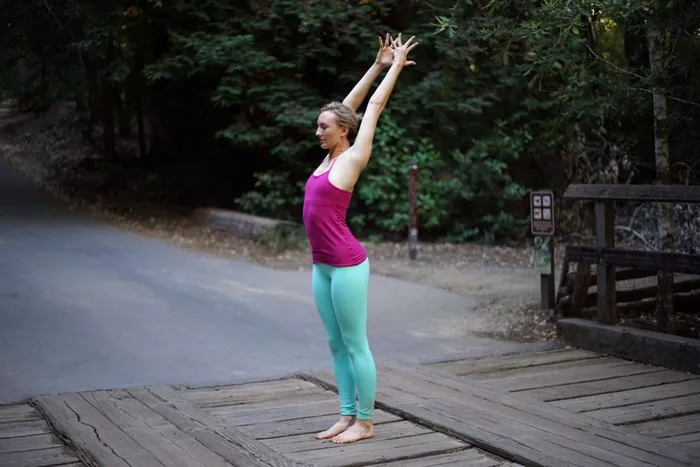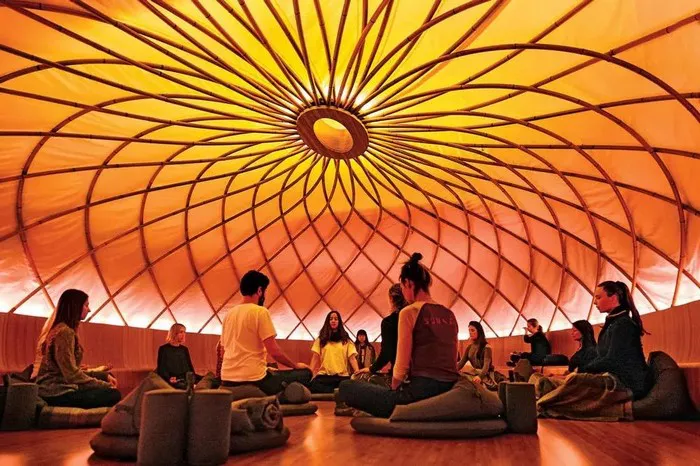In the realm of yoga, there exists a multitude of styles, each catering to different needs and preferences. Restorative yoga, characterized by gentle, supported poses held for extended periods, focuses on relaxation and rejuvenation of the body and mind. In such a serene practice, the attire you choose plays a vital role in enhancing your experience.
In this article, we’ll delve into the significance of selecting the appropriate clothing for restorative yoga sessions. From prioritizing comfort to considering fabric choices, we’ll explore how your attire can contribute to a more profound sense of ease and mindfulness during your practice.
Understanding the Essence of Restorative Yoga
Before delving into the specifics of what to wear, it’s essential to grasp the essence of restorative yoga. Unlike more dynamic forms of yoga, such as Vinyasa or Ashtanga, which focus on movement and strength, restorative yoga emphasizes relaxation and surrender.
Restorative poses are typically held for several minutes, often supported by props such as bolsters, blankets, and blocks. These props aid in creating a comfortable environment where practitioners can fully release tension and access a state of deep relaxation. In such a gentle practice, the clothing you wear should complement this sense of comfort and ease.
Prioritizing Comfort Over Fashion
When selecting attire for restorative yoga, comfort should be your primary consideration. Unlike some forms of exercise where form-fitting or compression clothing is preferred, restorative yoga calls for loose, breathable garments that allow for unrestricted movement and circulation.
Opt for clothing that feels soft against the skin and doesn’t constrict your body in any way. Loose-fitting tops, such as oversized t-shirts or breathable tanks, are excellent choices. Similarly, bottoms like relaxed-fit yoga pants or lightweight leggings provide the freedom of movement necessary for ease in restorative poses.
Avoid clothing with tight waistbands or restrictive seams, as these can dig into your skin and disrupt your ability to fully relax. Remember, the goal of restorative yoga is to release tension, both physically and mentally, so your attire should support this intention.
Choosing Breathable Fabrics
In addition to prioritizing comfort, consider the fabric of your yoga attire. Breathability is key, especially during longer holds in restorative poses, as it helps regulate your body temperature and prevents overheating.
Natural fabrics such as cotton, bamboo, and modal are ideal choices for restorative yoga. These materials are lightweight, moisture-wicking, and allow for ample airflow, keeping you cool and comfortable throughout your practice.
Avoid synthetic fabrics like polyester or nylon, which tend to trap heat and moisture against the skin, leading to discomfort and distraction. While these materials may offer stretch and durability, they often lack the breathability necessary for a restorative practice focused on relaxation and restoration.
Layering for Comfort and Warmth
While breathability is crucial, it’s also essential to consider the temperature of the practice space. Since restorative yoga often takes place in a tranquil setting conducive to relaxation, the room may be cooler than you expect.
To ensure optimal comfort, consider layering your clothing. Start with a lightweight, breathable base layer such as a moisture-wicking tank top or long-sleeved shirt. Over this, add a cozy sweater or hoodie that you can easily remove if you become too warm during the practice.
Layering not only allows you to adjust your clothing to the ambient temperature but also provides added comfort and insulation during extended periods of stillness in restorative poses. Opt for soft, non-restrictive layers that allow you to move freely and maintain a sense of ease throughout your practice.
Embracing Soft, Non-Restrictive Clothing
In restorative yoga, the goal is to surrender deeply into each pose, allowing the body to release tension and find a state of profound relaxation. To facilitate this process, choose clothing that feels like a second skin—soft, gentle, and non-restrictive.
Avoid garments with tight elastic bands or rigid seams that may dig into your skin and create discomfort during prolonged holds. Instead, opt for clothing with seamless construction or flatlock seams, which minimize irritation and allow for unrestricted movement.
Invest in high-quality yoga attire made from soft, stretchy fabrics that move with your body and provide support without constriction. Look for brands that prioritize comfort and functionality, with designs specifically tailored to the needs of yoga practitioners.
Mindful Accessories for Added Comfort
In addition to your clothing, consider incorporating mindful accessories to enhance your comfort during restorative yoga practice. Items such as yoga socks, which provide traction and warmth, can be beneficial, especially if you tend to get cold feet during extended periods of stillness.
A lightweight shawl or blanket is another valuable accessory to have on hand, particularly for restorative poses that involve reclining or covering the body. Choose a soft, breathable fabric that provides warmth without weighing you down, allowing you to fully relax and surrender into each pose.
Eye pillows filled with flaxseed or lavender can also enhance your restorative experience by blocking out light and providing gentle pressure to the eyes, promoting relaxation and deepening your sense of calm. Place an eye pillow over your eyes during Savasana or other resting poses to facilitate a deeper state of rest and rejuvenation.
Conclusion
In the practice of restorative yoga, every element, from the alignment of your body to the clothing you wear, plays a vital role in cultivating comfort and ease. By prioritizing comfort, choosing breathable fabrics, and embracing soft, non-restrictive clothing, you can create an optimal environment for relaxation and rejuvenation.
Remember that your attire should support your practice, allowing you to move freely and fully surrender into each pose without distraction or discomfort. Whether you prefer loose-fitting tops and bottoms or cozy layers that provide warmth and insulation, the key is to listen to your body and choose clothing that honors your unique needs and preferences.
By approaching your restorative yoga practice with mindfulness and intention, you can create a sanctuary of comfort and tranquility where you can nourish your body, mind, and spirit. So, take a moment to reflect on your wardrobe choices, and embrace clothing that supports your journey toward deeper relaxation and well-being.





















